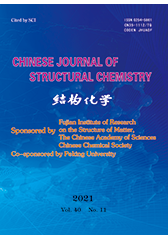Constructing Versatile Hydrophilic Surfaces via in-situ Aminolysis
CHEN Shuo, HUANG Wei, YANG Kea XU Yan-Lian*, WANG Dong-Hui* and HUANG Wei-Guo
Chin. J. Struct. Chem. 2021, 40, 1525-1534 DOI: 10.14102/j.cnki.0254-5861.2011-3196
December 15, 2021
surface hydrophilization, in-situ aminolysis, antifogging, self-cleaning, antifouling, regeneration
ABSTRACT
Surface
hydrophilization is required for numbers of applications such as biosensor,
biomedical implants and marine coating. However, the preparation of hydrophilic
surface from a solid substrate still suffers from limited thicknesses, complex
procedures, restricted substrates and harsh conditions. Herein, a method based
on in-situ aminolysis of
poly(pentafluorophenyl acrylate) (pPFPA) capable of generating arbitrary hydrophilic
surface is proposed, enabling high design freedom and abundant choices of hydrophilic
molecules. Simply immersing pPFPA coated substrates into
3-((3-aminopropyl)dimethylammonio)propane-1-sulfonate (ADPS), β-alanine and amine-terminal
poly(ethylene glycol) (NH2-PEG) solutions for two hours drastically
reduces the water contact angle of the corresponding surfaces, indicating the
high efficiency and excellent generality of such method. Systematical studies reveal
that these coatings are able to mitigate fog formation, self-clean the oil
contaminant and exhibit excellent antifouling performance against algae.
Notably, relying on the fast and quantitative feature of the aminolysis, these
hydrophilic surfaces possess excellent regeneration capability and well-recover
their hydrophilic feature after being physically damaged. This work represents
a facile and universal way to fabricate versatile hydrophilic surfaces for
multi-functional applications such as self-cleaning, patterning, sensing, antifogging
and anti-biofouling.








